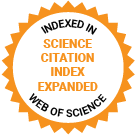Journal of Medical Internet Research
The leading peer-reviewed journal for digital medicine and health and health care in the internet age.
Editor-in-Chief:
Gunther Eysenbach, MD, MPH, FACMI, Founding Editor and Publisher; Adjunct Professor, School of Health Information Science, University of Victoria, Canada
Impact Factor 5.8 CiteScore 14.4
Recent Articles

Type 1 diabetes mellitus (T1DM) significantly affects patients’ quality of life and can be life-threatening, necessitating improved monitoring strategies. Telemedicine, which leverages telecommunications technologies to deliver health care services and expertise, has the potential to enhance T1DM management. However, its effectiveness remains to be fully established.

Ocular myasthenia gravis (OMG) is a neuromuscular disorder primarily affecting the extraocular muscles, leading to ptosis and diplopia. Effective patient education is crucial for disease management; however, in China, limited health care resources often restrict patients’ access to personalized medical guidance. Large language models (LLMs) have emerged as potential tools to bridge this gap by providing instant, AI-driven health information. However, their accuracy and readability in educating patients with OMG remain uncertain.

Diabetes mellitus significantly increases the risk of severe complications from influenza, necessitating targeted vaccination efforts. Despite vaccination being the most effective preventive measure, coverage remains below the World Health Organization’s targets, partly due to limited awareness among patients. This study evaluated a digital health intervention aimed at improving influenza vaccination rates among adults with diabetes.

In the context of mass casualty incident (MCI) management, artificial intelligence (AI) represents a promising future, offering potential improvements in processes such as triage, decision support, and resource optimization. However, the effectiveness of AI is heavily reliant on the availability of quality data. Currently, MCI data are scarce and difficult to obtain, as critical information regarding patient demographics, vital signs, and treatment responses is often missing or incomplete, particularly in the prehospital setting. Although the NIGHTINGALE (Novel Integrated Toolkit for Enhanced Pre-Hospital Life Support and Triage in Challenging and Large Emergencies) project is actively addressing these challenges by developing a comprehensive toolkit designed to support first responders and enhance data collection during MCIs, significant work remains to ensure the tools are fully operational and can effectively integrate continuous monitoring and data management. To further advance these efforts, we provide a series of recommendation, advocating for increased European Union funding to facilitate the generation of diverse and high-quality datasets essential for training AI models, including the application of transfer learning and the development of tools supporting data collection during MCIs, while fostering continuous collaboration between end users and technical developers. By securing these resources, we can enhance the efficiency and adaptability of AI applications in emergency care, bridging the current data gaps and ultimately improving outcomes during critical situations.

Social anxiety disorder is a common mental health condition characterized by an intense fear of social situations that can lead to significant impairment in daily life. Cognitive behavioral therapy (CBT) has been recognized as an effective treatment; however, access to therapists is limited, and the fear of interacting with therapists can delay treatment seeking. Furthermore, not all individuals respond. Tailoring modular treatments to individual cognitive profiles may improve efficacy. We developed a novel digital adaptation of CBT for social anxiety that is both modular and fully digital without a therapist in the loop and implemented it in the smartphone app Alena.

Micronutrient deficiencies in folate, ferritin, calcium, and vitamin D are common during pregnancy in low- and middle-income countries, often due to inadequate diets. Micronutrient supplementation can address this need, whereas innovative awareness strategies in antenatal practices could enhance supplement use compliance.

As artificial intelligence (AI) permeates the current society, the young generation is becoming increasingly accustomed to using digital solutions. AI-based medication counseling services may help people take medications more accurately and reduce adverse events. However, it is not known which AI-based medication counseling service will be preferred by young people.

Considering that most patients with low or no significant risk factors can safely undergo noncardiac surgery without additional cardiac evaluation, and given the excessive evaluations often performed in patients undergoing intermediate or higher risk noncardiac surgeries, practical preoperative risk assessment tools are essential to reduce unnecessary delays for urgent outpatient services and manage medical costs more efficiently.

Information distortion in nursing records poses significant risks to patient safety and impedes the enhancement of care quality. The introduction of information technologies, such as decision support systems and predictive models, expands the possibilities for using health data but also complicates the landscape of information distortion. Only by identifying influencing factors about information distortion can care quality and patient safety be ensured.

Self-recording is an effective behavior change technology that has long been used in diverse health contexts. Recent technological advancements have broadened its applications. While previous studies have explored its role and benefits in enhancing self-awareness and informed decision-making, relatively little attention has been given to its potential to address the multidimensional nature of health with various health metrics.

Health coaching refers to the practice of health education and promotion to drive goal-directed behavioral changes and improve an individual’s well-being. Remote patient monitoring systems, which employ health coaching interventions, have been gaining interest and may aid in the management of patients with type 2 diabetes mellitus (T2DM).
Preprints Open for Peer-Review
Open Peer Review Period:
-
Open Peer Review Period:
-

















